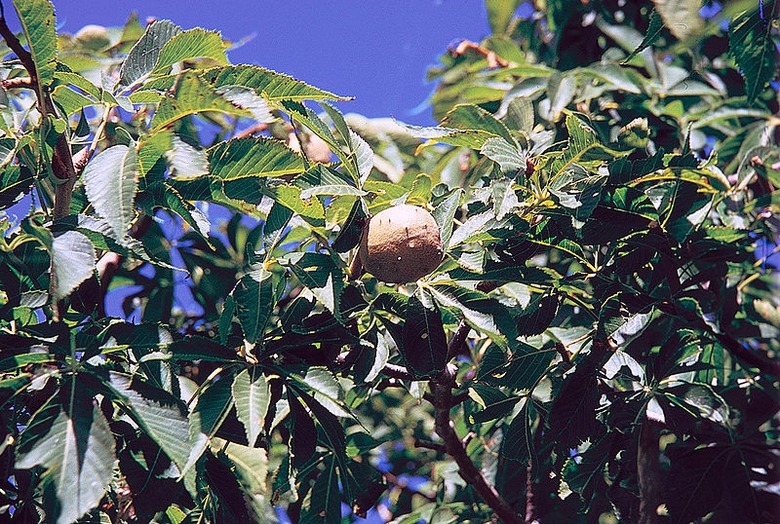Uses For Buckeye Trees
The Buckeye Tree, the symbol of the state of Ohio, has had many uses, a place in folklore and even a role in political campaigns. It has been used as a medicine and, despite being poison, Native Americans ate the nut of the tree after careful preparation. The buckeye is even the mascot for Ohio State University.
Identification
Identification
The Buckeye Tree grows mainly in the Ohio and Mississippi Valley regions. It reaches 30 to 50 feet in height and 2 to 3 feet in diameter. It produces white to yellow flowers in large clusters, but much of the folklore associated with the tree and some of the trees uses come from its fruit–a 1- to 2-inch seed capsule with spiny growths over its surface. Inside the fruit are one to five seeds or nuts.
Tree
Tree
Today, the buckeye tree is used primarily for pulp or is planted as part of landscaping. In the past it has been used in the building of furniture, crates, pallets and caskets. Because the buckeye wood was lighter weight than that from other trees, early settlers used it for carving, whittling, the making of utensils and for making strips to be used in creating hats and baskets. It is an especially popular wood for making prosthetic limbs because of its light weight.
Medicinal
Medicinal
In addition to its use as a meal by Native Americans who roasted, peeled and mashed the seeds to create a dish known as hetuck, the buckeye was also used in early medicine. Extracts from the nut have been used in cerebrospinal treatment. Though poisonous because of its tannic acid content, the buckeye–at times in history–has been used as a sedative, for relieving constipation and asthma and for the treatment of hemorrhoids and "female disorders." It is also said to relieve the pain of arthritis and rheumatism.
Traditional
Traditional
Traditional uses of the buckeye varied from folklore to its practical role in daily life. The buckeye nut is a good luck charm, according to tradition. The name comes from Native Americans who noted the seed's similarity to that of the eye of a male deer. The nut is glossy and chestnut brown with a light color encircling it, creating the impression of an eye. Native Americans used the tannic acid in the nuts for leatherworking and the seeds were–and still are–dried for making jewelry and other crafts.
Politics
Politics
The buckeye came to be a symbol of William Henry Harrison's political campaign. An opposition newspaper led to the image of a log cabin complete with raccoon skins and a string of buckeyes being the image associated with the presidential contender. Harrison accepted the buckeye association and made his campaign song one that began with the lyrics, "Oh where, tell me where was your buckeye cabin made? ... " The buckeye tree was officially adopted as Ohio's state tree in 1953, and residents of Ohio are known as "Buckeyes."
Cite This Article
MLA
Foster, Bethney. "Uses For Buckeye Trees" sciencing.com, https://www.sciencing.com/uses-buckeye-trees-5465217/. 22 November 2019.
APA
Foster, Bethney. (2019, November 22). Uses For Buckeye Trees. sciencing.com. Retrieved from https://www.sciencing.com/uses-buckeye-trees-5465217/
Chicago
Foster, Bethney. Uses For Buckeye Trees last modified March 24, 2022. https://www.sciencing.com/uses-buckeye-trees-5465217/
